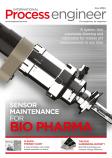When Unilever released Persil Power in 1994, customers thought it was the perfect stain-remover. The problem was, while the new formula did remove stains, it also ruined the fabric. Recalling the product and dealing with the complaints cost Unilever an estimated £250 million. Here Jonathan Wilkins, director of EU Automation, explains how manufacturers can improve product quality.
If a company releases a poor-quality product, it can have a negative impact on the reputation of the business. For example, a machined component in the aerospace industry must be manufactured to tight tolerances, or it will not be suitable for the final assembly. An effective way to do this is by increasing the amount of automation in their facility.
Robotics
Investing in automation and robotics increases the speed of production and improves productivity. Another benefit of automation is that robots are highly repeatable and accurate, which can impact product quality.
Robots can be programmed to reliably and precisely repeat a task on the assembly line that could be repetitive and laborious for a human worker. Using robots to complete repetitive tasks will improve accuracy because the robot will not experience fatigue or introduce human error.
A six-axis robot, for example, is a high-performance articulated robot designed for assembly applications. The different axes give the robot the flexibility needed to perform a wide range of industrial tasks and manufacturers can place them where they require fast and precise actions, such as pick and place applications.
Providing it is calibrated correctly, an automated system is highly repeatable, meaning that products will also be handled the same way each time during production. If the machine is not performing as expected, it may be that you need a replacement component or to perform some maintenance. Staying on top of this will ensure return-on-investment (ROI) for manufacturers.
Detection
As the assembly line speeds up and cycle times decrease, manufacturers should also consider how they can monitor quality. Inspection can be done manually but it is a labour-intensive process for employees and there is a risk of human error. Alternatively, manufacturers can invest in a machine vision system to improve speed and accuracy during quality control.
Machine vision systems can rapidly inspect each item on the production line to ensure the quality of a component or product. A machine vision system uses a combination of lights, sensors and cameras to ensure each product meets the same specific criteria and may notice defects too small for the human eye. It can complete inspection extremely quickly, accurately and immediately report to human workers, so defects can be found before it causes a negative impact.
We don’t need to worry about our clothes disintegrating when we add Persil to the wash any more. In any area of manufacturing, a lapse in judgement during production or inspection can lead to defects and expensive recalls. Manufacturers should consider how technology can help improve the quality of products and detect any faults without compromising on productivity or speed of production.


















